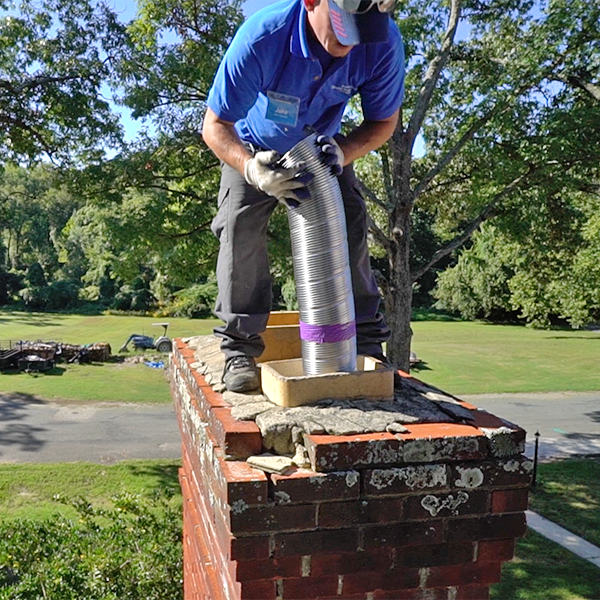If you live in Danville and have a fireplace, you’ve probably heard about the importance of a Chimney Liner. But how often should you really be thinking about replacing it? Let’s talk about what a Chimney Liner does, why it matters, and how to know it’s time for a change—all in a way that makes sense, even if you’ve never peeked inside your chimney before.
Key Features of a Chimney Liner
Before we get into timing, let’s take a quick look at what a Chimney Liner actually does. Imagine the liner as the chimney’s secret guardian. It’s a protective tube or layer inside the chimney that keeps the heat, smoke, and nasty gases moving safely upwards and out, instead of leaking into your home’s walls or attic. Without a good liner, all sorts of trouble can sneak in, from smoky smells to, in the worst cases, house fires.
| Chimney Liner Feature | Why It Matters |
|---|---|
| Heat Protection | Shields your walls and attic from the intense heat of a fire. |
| Prevents Leaks | Keeps smoke and dangerous fumes out of your living spaces. |
| Improves Efficiency | Helps your fireplace or stove burn cleaner and better. |
| Blocks Debris | Stops creosote and soot from building up in tricky places. |
Why Safety Comes First
The first thing to remember is: a worn-out Chimney Liner is a safety hazard. In Danville’s variable weather, liners can take a beating from temperature changes and humidity. Over time, cracks or holes might appear. That’s when things start to get risky—smoke could seep into your house, or even worse, a chimney fire could break out. For most homes in our area, an annual chimney inspection is a smart move. If your inspector finds damage or significant wear, replacing the liner right away is the best way to keep everyone safe.
The Real Cost of Delaying Replacement
I get it—nobody loves the idea of spending money on something you can’t even see. But skipping or postponing a Chimney Liner replacement can actually cost you more in the long run. If problems are left unchecked, you might end up with smoke damage, expensive repairs, or even structural issues down the road. The price for a new liner varies, depending on the size and type of your chimney, but it’s usually much less than fixing a chimney fire or dealing with carbon monoxide leaks.
When Emergency Service Is Needed
Sometimes, emergencies pop up out of nowhere. Maybe you smell smoke when there’s no fire, or you see pieces of the liner falling into your fireplace. If you ever notice these warning signs, don’t wait—call a local professional in Danville who offers emergency chimney liner services. Quick action can save your home and keep your family safe. Even if you don’t spot a problem, it’s still wise to have a pro check things out before each heating season.
FAQs About Chimney Liner Replacement
How often does a Chimney Liner need to be replaced?
There’s no one-size-fits-all answer, but most liners last between 15 and 20 years with normal use. If you use your fireplace a lot, or if you’ve had chimney fires in the past, you might need to replace it sooner.
Can I check my own Chimney Liner?
A basic peek with a flashlight might show obvious issues, but it’s best to let a certified chimney sweep in Danville do a full inspection—they have the right tools and experience to spot hidden problems.
What are the signs my Chimney Liner needs replacing?
If you notice strong smoky odors, crumbling bits in your fireplace, or your fires are harder to start, it could point to liner trouble.
Is it okay to use the chimney if the liner is damaged?
It’s not safe. Using a damaged liner could let harmful gases into your home or even cause a fire in your walls or attic.
Wrapping Up
To sum it up, your Chimney Liner is a silent hero in your home’s safety system. If you live in Danville, schedule a chimney inspection every year, and replace your liner if it’s worn out or damaged. With a little attention, you can keep your fireplace cozy and your family safe for many winters to come.
Read more : Danville Chimney Sweep

